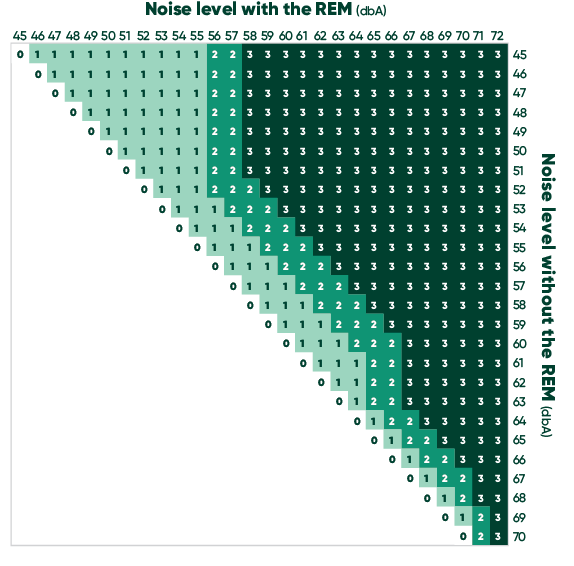The REM and noise: from theory to practice
Even if the perception of noise remains specific to each individual, there is nevertheless a regulatory reference framework with which the project must comply which takes the particularities of each sector into account.
Video capsule: REM and noise, from theory to practice
In this last capsule of a series of three videos, Jean-Philippe Pelletier, responsible for the portion of the REM under construction, explains the approach to dealing with the noise issue.
A regulatory framework for the REM’s noise impact
The entire REM project (construction and operation) is governed by an order issued by the Québec government. Under this order, there are three requirements for monitoring the ambient noise of the REM in operation:
- Sound modelling of REM in operation
- Implementing the required mitigation measures in the event of significant impacts
- Implementing an ambient noise monitoring program
What is sound modelling?
Sound modelling is a technique used to predict and evaluate noise levels in a given environment. It is a simulation to understand how sounds emitted by a source will spread, and their impact on identified receptors, such as buildings. It is based on three main stages:
1.
Understanding the initial ambient noise (prior to REM) with field measurements
2.
Predicting the ambient noise (with REM) through theoretical estimation
3.
Identifying areas where noise impact is significant according to the regulatory reference framework and finding appropriate mitigation measures
A large number of inputs were programmed into calculation software to produce this REM sound model, including:
- Addition of REM noise, taking into consideration frequency and speed, structure elevation, route curves, various operating scenarios, etc.
- Consideration of ambient noise, road traffic, topography, proximity of residential areas, etc.
Thanks to this modelling process, the sectors where REM circulation has a significant impact on ambient noise have been identified. These results also guided the choice and location of mitigation measures.
What constitutes a significant impact?
According to the Politique sur le bruit routier of the Ministère des Transports du Québec, which applies to the REM, an impact is significant when the difference between the current noise level over a 24-hour period and the projected level over a 24-hour period generates a strong or medium impact, according to the Ministère’s analysis grid.
Level of impact
0 : No impact
1 : Low impact
2 : Medium impact
3 : Strong impact

It is therefore very important to take the characteristics of each sector into account. Modelling was carried out accordingly. The noise impact of the REM in operation was assessed at sensitive receptors installed on property lines, i.e. at residential, recreational and institutional (school, hospital, etc.) buildings located along the route.
In addition to the analyses and modelling carried out as part of the project, more analyses are planned throughout the REM operating period, as provided for by the ambient noise monitoring program.
What can be expected after commissioning?
As stipulated in the order and in our commitments, a noise monitoring program is to set up upon commissioning. The aim is to make sure that the mitigation measures are effective and that ambient noise remains in line with expectations.
The noise monitoring program for the REM must be deployed 1, 5 and 10 years after network commissioning, as required by the order. The REM team has planned more regular voluntary follow-ups in the 1st, 2nd, 3rd, 5th and 10th years of REM operation. If this monitoring program reveals significant impacts, additional measures will be implemented.
The REM’s arrival is a force for change in the mobility of Greater Montréal residents. But it is also a new neighbour that will make sure it blends in with every environment it covers over time.